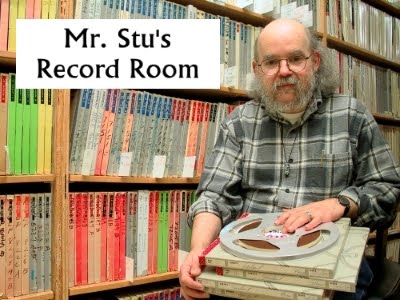With so much music available by Sun Ra and his Arkestra, you might not think there was room for more. But At The Showcase: Live In Chicago, 1976-1977 is special, with excerpts from two performances at Chicago’s premier jazz spot. The Arkestra on these occasions was one of the man from Saturn’s finest assemblies of musicians, with the all-time great reed section of Marshall Allen, Danny Davis, John Gilmore, Eloe Omoe, and Danny Thompson, a trumpet section that included Ahmed Abdullah and Michael Ray, and the mighty percussion team of Luqman Ali, Eddie Thomas, James Jacson, and Atakatune. I had the pleasure of seeing the Arkestra a number of times during the Seventies and Eighties, and I can truly say that there is nothing like a Sun Ra concert. There was always a galaxy of sound, including Sun Ra’s amazing electronic keyboard solos, plus Afrofuturist spectacle, space chants, wild costumes, and more. Let’s just say it was always a trip into the unexpected and his music thrilled audiences like nothing else could. At The Showcase was judiciously assembled by Michael D. Anderson, who was appointed by Sun Ra as the band’s archivist in the late Seventies. It’s been issued with the full cooperation of impresario Joe Segal’s estate and the Sun Ra estate. These sections of two sets, separated by nearly two years, provide a taste of what could be happening on stage (and sometimes in the aisles!). Both sets are in excellent sound, likely with a feed directly from the club’s mixing console. The 1977 performance feature the Arkestra in peak musical form. Starting out with New Beginning, an exotic flute and percussion piece, the band moves into View From Another Dimension, a riot of electronic keyboard, blaring trumpet, and percussion madness, before moving on to Ra perennials like Ankhnaton and Velvet, plus the swing-era tune Rose Room. The 1976 set on disc 2 is pretty wild, heavy on the chants and Ra’s other-worldly keyboards. It also features one of the most insane things I’ve ever heard, Ebah Speaks in Cosmic Tongue. A 36-page booklet features Hal Rammel’s photos from the Chicago shows; he also contributes his recollections of being on the scene. There are more photos from an October 1980 show in San Francisco, taken by Tom Copi. The main liner notes are by the multi-talented John Corbett. He begins his piece by writing “Sun Ra had a storied history with Chicago,” and goes on to discuss the evolution of the Arkestra’s involvement in the city as well as these particular shows. Anderson also writes about his life with Sun Ra and his close collaboration with Corbett. Between the two of them, they “have everything Sun Ra did.” Given the Arkestra’s peripatetic wanderings, it comes as no surprise that the tapes are “a puzzle,” often with little or no written information as to dates, venues, and songs. It’s taken heroic efforts by Corbett, Anderson, and Irwin Chusid of the Sun Ra estate to bring this high-profile project to fruition. We also get to read reflections on Sun Ra’s music by the great Marshall Allen, nearly 100 years old and still leading the Arkestra. Finally, there are comments by a broad array of musicians: Michael Weiss, Dave Burrell, David Murray, Jack DeJohnette, Matthew Shipp, Amina Claudine Myers, Reggie Workman, and Thurston Moore of Sonic Youth. I think I’ll leave the last word to Mr. Shipp: Sun Ra “occupies his own position in the jazz firmament.”
At The Showcase: Live In Chicago, 1976-1977; Michael Ray, Ahmed Abdullah, Emmett McDonald (tpt) Vincent Chancey (Fr hn) Marshall Allen (as, fl, kora) Danny Davis (as, fl) Eloe Omoe (as, bcl) John Gilmore (ts) Danny Thompson (bari s, fl) Dale Williams (g) Sun Ra (p, electronic kybds) Richard Williams (b) Luqman Ali (d) Eddie Thomas (perc) Atakatune (cga) James Jacson (ancient Ihnfinity d, oboe) June Tyson, Cheryl Banks-Smith, Wisteria (Judith Holton) (vcl); Chicago, IL, November 4 & 10, 1977 (disc 1) and February 21, 1976 (disc 2); Disc 1 (52:14): New Beginnings/ View From Another Dimension/ Synthesis Approach/ Ankhnaton/ Rose Room/ Moonship Journey/ Velvet. Disc 2 (36:46): Calling Planet Earth & The Shadow World/ Theme of the Stargazers/ Space is the Place/ Applause/ Ebah Speaks in Cosmic Tongue/ Greetings From the 21st Century. deepdigsmusic.com
























